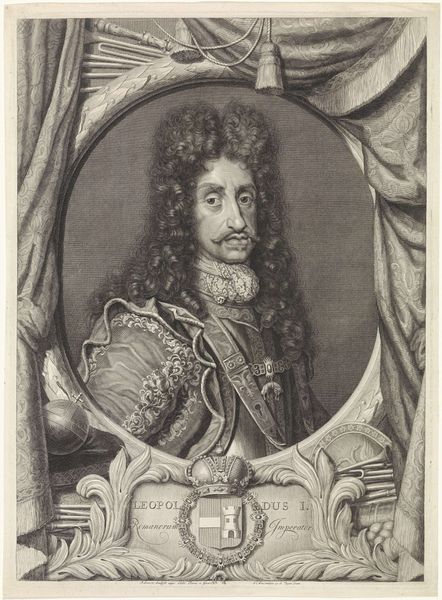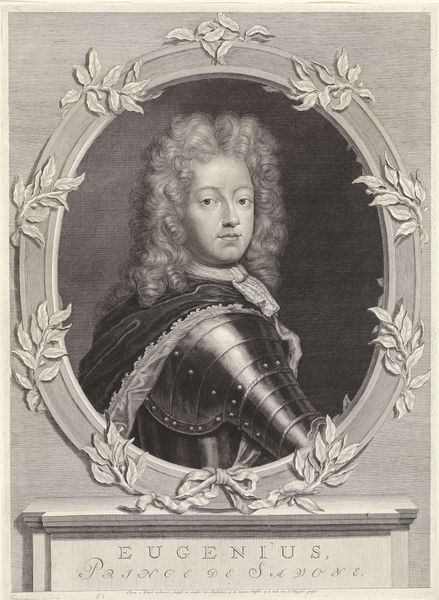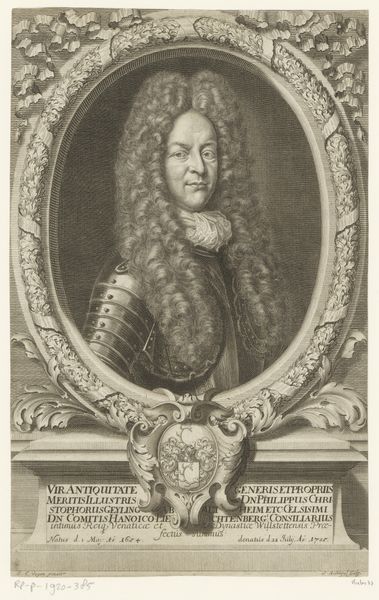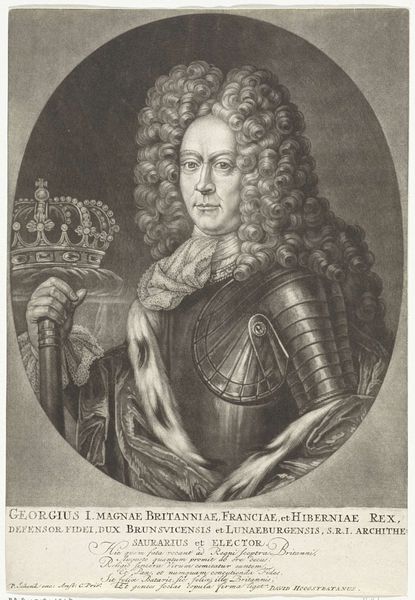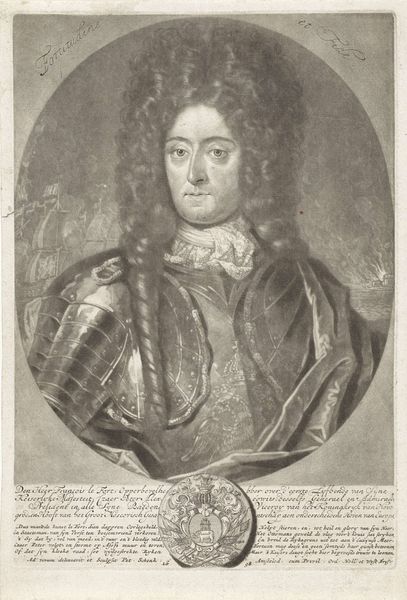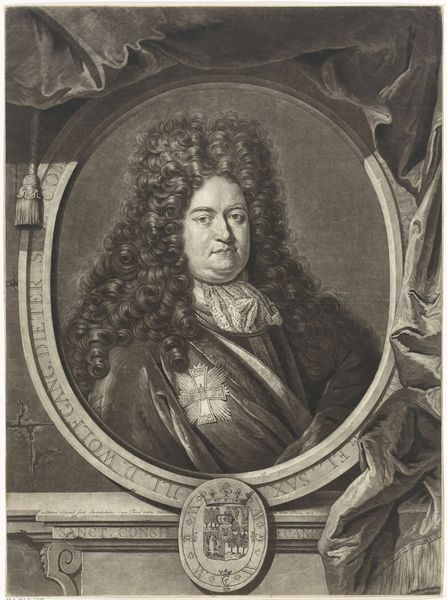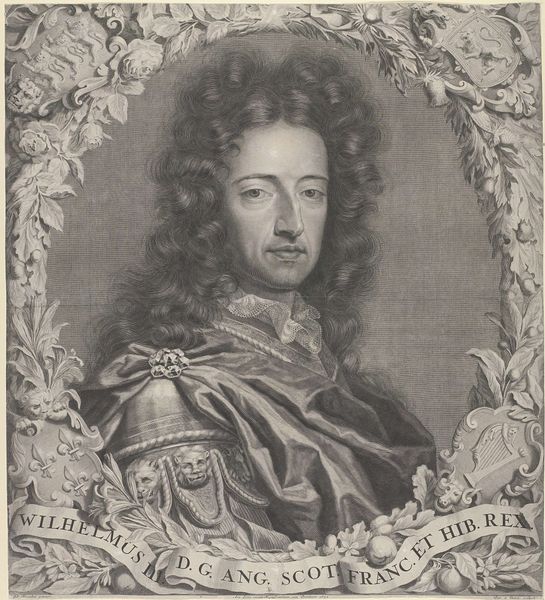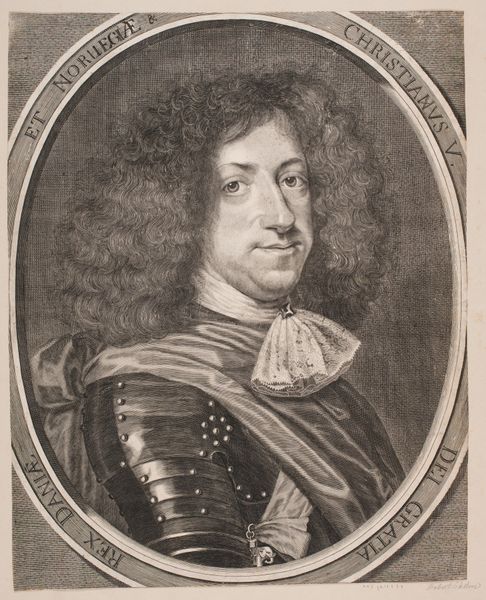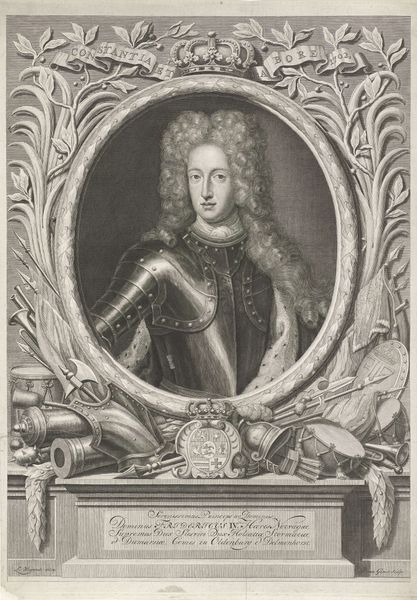
print, engraving
#
portrait
#
baroque
# print
#
history-painting
#
academic-art
#
engraving
Dimensions: height 573 mm, width 415 mm
Copyright: Rijks Museum: Open Domain
Pieter van Gunst made this portrait of Louis XIV in the late 17th or early 18th century using the technique of engraving. Engraving is a printmaking process where an image is incised into a metal plate, usually copper. The artist would use a tool called a burin to carve lines into the plate. The incised lines hold ink, and when the plate is pressed against paper, the image is transferred. Look closely and you’ll see the extraordinary detail achieved through the process of engraving. Van Gunst skillfully used fine lines to capture the texture of Louis XIV's elaborate wig, the sheen of his armor, and the intricate patterns of the drapery. This wasn’t just a technical exercise; it was a performance of power. Louis XIV used his image as a form of propaganda, and printmaking allowed for the wide dissemination of his likeness. The labor-intensive process also underscored the king’s wealth, commissioning an artist and numerous prints. By focusing on the materiality and making of this print, we can understand how it participates in a broader culture of image-making and political power. It highlights the historical context of the print and the amount of work involved in its production.
Comments
No comments
Be the first to comment and join the conversation on the ultimate creative platform.

